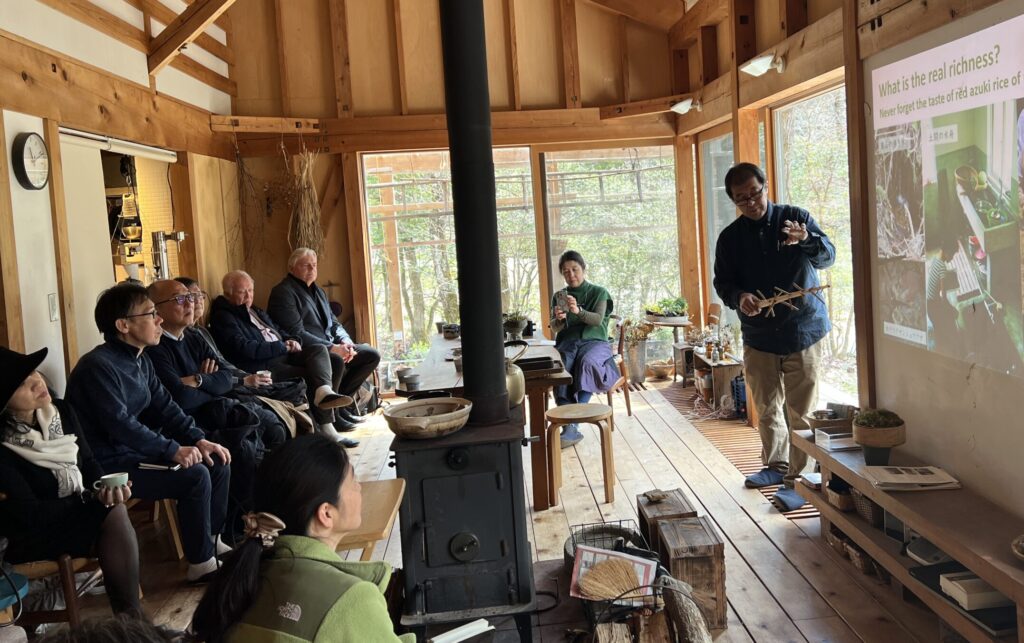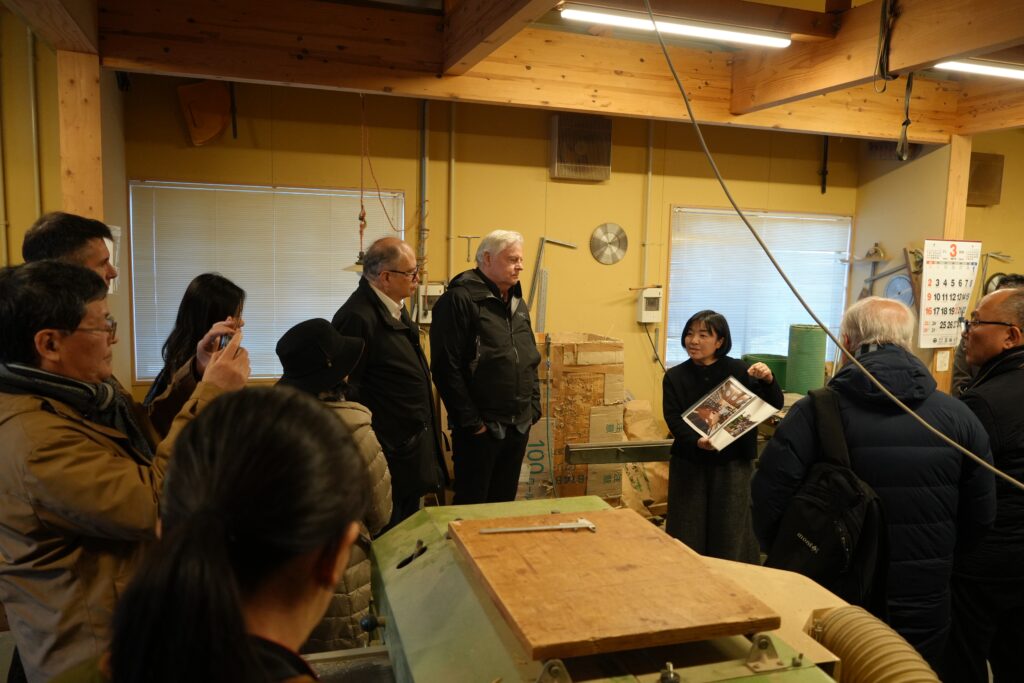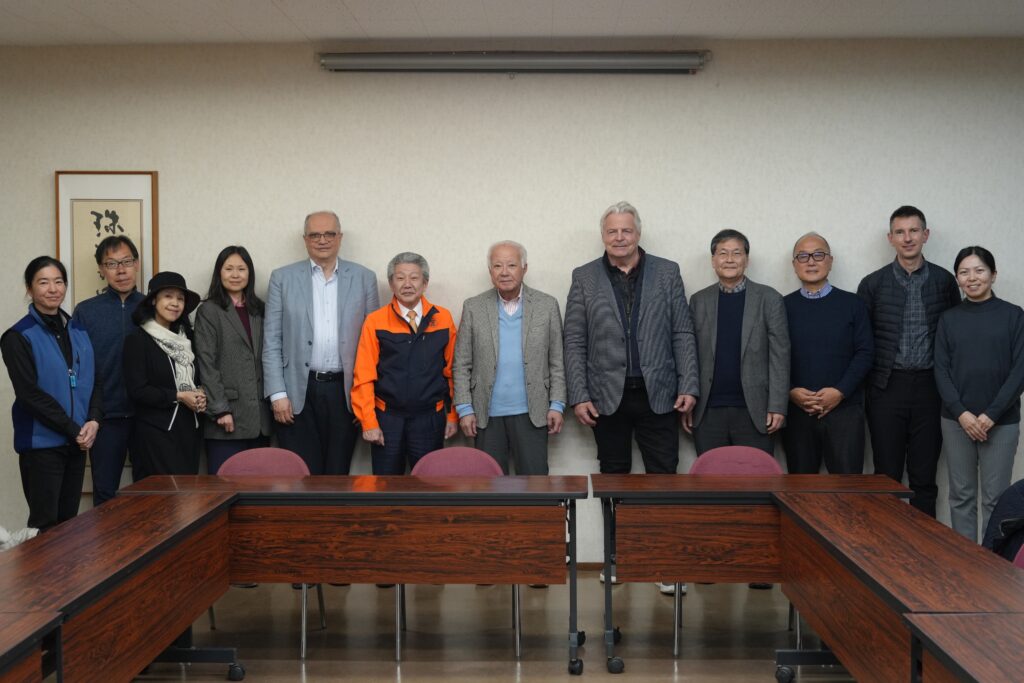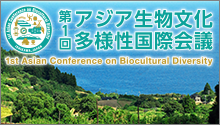On March 18-19, 2025, the United Nations University Institute for the Advanced Study of Sustainability Operating Unit Ishikawa/Kanazawa (UNU-IAS OUIK) organized a field visit to disaster-affected areas of the Noto Peninsula, joined by experts and stakeholders from Japan and abroad. The delegation observed the extent of the damage caused by the 2024 Noto Peninsula Earthquake and torrential rain and explored the recovery efforts that utilize traditional culture, natural resources, and strong community ties.
The delegation included 11 members: Dr. Youssef Nassef (Director, Adaptation Programme, UNFCCC), Dr. Xiaomeng Shen (UNU Vice-Rector in Europe (UNU-VIE) and Director of the UNU Institute for Environment and Human Security (UNU-EHS)), Prof. Shinobu Yume Yamaguchi (Director, UNU-IAS), Prof. Kazuhiko Takeuchi (President, Institute for Global Environmental Strategies (IGES)), Prof. Thomas Elmqvist (Professor, Stockholm Resilience Centre, Stockholm University), Mr. Mitsuo Kojima (UNU-IAS Board Member), Dr. Osamu Saito (Principal Policy Researcher, Biodiversity & Forests, Strategic Management Office, IGES) , Dr. Tsunao Watanabe (Visiting Research Fellow, UNU-IAS OUIK), Ms. Sayako Koyama (Research Associate, UNU-IAS OUIK), Dr. Juan Pastor-Ivars (Research Fellow, UNU-IAS OUIK) and Ms. Yoko Tomita (Programme Coordinator, UNU-IAS OUIK)
On the morning of the first day, the delegation visited Mr. and Ms. Hagino (Maruyama Group, a place-based learning of Satoyama Lifestyle), in Wajima City. They shared insights into the value of traditional knowledge and architectural culture rooted deeply in the region. The couple spoke about how the significant damage to traditional homes caused by the earthquake, the temporary loss of electricity, water, and food supplies, and how they relied on preserved foods and local water sources in a self-sufficient lifestyle. They also shared thoughts on disaster preparedness and emphasized the importance of pursuing a steady and resilient recovery while respecting the local landscape and community identity.

Presentation on Maruyama Group by Mr. Hagino
In the afternoon, the delegation visited the Machino area of Wajima City, which was severely impacted by the earthquake and subsequent torrential rain. Afterward, they met with Ms. Junko Kirimoto (Vice-Representative, Wajima Kirimoto), who introduced efforts to revitalize the traditional lacquerware industry. She shared a new project called “Wajima-nuri RESCUE&REBORN,” which transforms damaged pieces into new works of art, breathing new life into the craft.

Mrs. Junko Kirimoto (Vice-Representative, Wajima Kirimoto)
The next day, the delegation visited Mr. Choichiro Ohno (Representative, Noto Hahaso Co., Ltd.) in Suzu City, who continues the traditional practice of charcoal making. He described how charcoal production has resumed since the earthquake and discussed future initiatives in forest restoration and community revitalization. Furthermore, he shared various ideas on how to enhance the overall resilience of the region through charcoal making, including the development of earthquake-resistant kilns, the off-grid setup of a new factory in the relocation site, and community-based disaster prevention planning.
The group then visited the Noto Gakusha facility of Kanazawa University, where Ms. Hanako Nakamura and Mr. Shuhei Yamashita (Staff members, Noto Gakusha) provided an overview of the Noto Satoyama Satoumi SDGs Meister Program. This program has been nurturing local leaders for over a decade and continues to contribute to regional revitalization even after the disaster. Mr. Daisuke Utsunomiya (People-Nature Coexistence Researcher, Suzu City/Noto SDGs Lab Coordinator) presented the efforts made so far by the Noto SDGs Lab towards sustainable regional development.
The next visit was to the Wakayama area in Suzu City, where the delegation observed severe damage, including river erosion, housing destruction, and collapsed slopes. These observations highlighted the urgent need to implement Eco-DRR (Ecosystem-based Disaster Risk Reduction) as a climate adaptation strategy.
The visit concluded with a meeting with Mayor Masuhiro Izumiya (Mayor, Suzu City) at the Suzu City Hall, where he shared the impact of the earthquake and heavy rain, the current recovery status and future reconstruction plans. He expressed that many local residents strongly wish to return to their hometown despite the disaster risks in the area, and emphasized that “achieving resilient reconstruction that respects this sentiment will be a key challenge moving forward.”

Meeting with Mayor Masuhiro Izumiya (Mayor, Suzu City) at the Suzu City Hall
Through the two-day visit to the Noto Peninsula, the team had the opportunity to get a sense of the current situation and challenges in areas still bearing the scars of disaster. At the same time, the delegation realized that traditional knowledge and coexistence with nature hold the power to shape the future of these regions. Respecting the landscapes and communities of the affected areas in the reconstruction process, revitalizing the cultural industries, fostering human resources, and utilizing nature for disaster prevention are important keys for sustainable regional development.
UNU-IAS OUIK will continue to apply these learnings to future research and communication, and will continue working with the local community to aim for a sustainable and resilient recovery.





